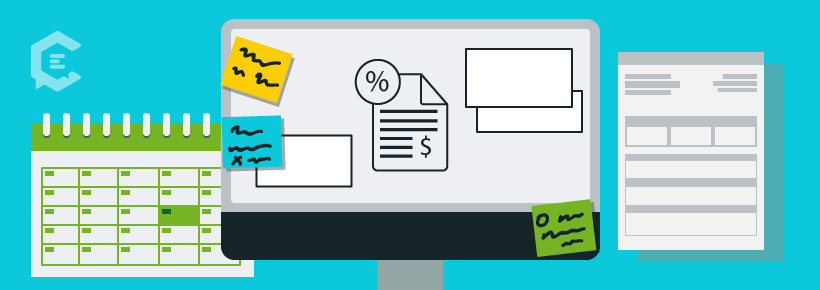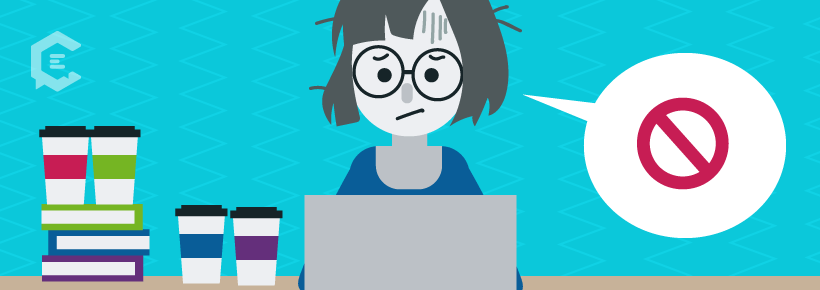With freelancing, knowledge is collected as you go along. I started my freelancing career moonlighting eight years ago, full-time freelancing for three. As with any other freelancer, I’ve experienced highs and lows, yet from each of the lows, I’ve learned some key lessons along the way. Ones I would like to share with you… Without further adieu, here are some tips I’ve collected along the way.
What I’ve learned as a freelance writer
1. Know where to look for work.

Not all writer gigs are created the same. There are multiple job boards that offer $0.01 per word for projects, or $15 per blog post. Red alert, red alert! If you value your time and want to actually turn a profit as a freelancer, you MUST learn how to properly price yourself.
Remember: writer platforms like ClearVoice allow you to avoid sketchy classified ads or content mills. In fact, the collaborative workspace allows freelancers to seize opportunities by setting your own rates, deciding what projects you want, pitching to clients, and getting paid all within one dashboard.
2. Don’t be afraid to self-promote on social.
Your social media profiles are frequently stalked as a freelancer. Potential clients look to social profiles to make sure you’re a worthy investment and don’t set off any red flags. Here are some tips on this:
Focus on the right channels
Be on the social networks where potential referrals, clients and freelancer colleagues are. LinkedIn, Google+, and Twitter are professional-oriented networks worthy of pursuit.
Optimize your profile
Vague and overly avant-garde profiles that leave people scratching their heads about what you’re about won’t just increase the likelihood they’ll move on to another account — they could cost you search results. It’s important to optimize your social media profiles. What do I mean by optimize? Take the time to invest in taking a professional headshot, include keywords within your bio, and include links to your website, if applicable.
Create meaningful relationships
Use a service like Klout to find influencers based on your industry and interests, and take the time to not only post statuses but to engage with others as well.
Keep it light
Deleting angry tweets doesn’t make them disappear — screenshots allow them to live indefinitely. Once people view your negativity, the damage is done. Clients will see that you are a diva and will avoid hiring you.
3. Optimize your writer profiles!
Along the same line, it’s important to optimize your profile on freelance writer networks. Just as you would create a click-worthy presence on social media channels, you need to do the same on your profile. Case in point, the ClearVoice writer portfolio. Make sure to include:
- A professional headshot
- A personal tagline (think content specializations and what sets you apart from other writers)
- A detailed paragraph for your bio
- A background banner image
- Links to your social media accounts
- Examples of your previous work (live links, PDFs or images) organized into custom sections
You also can upload custom images to go with any piece of content your post to portfolio and can write a contextual description about each content piece, along with a tag of your role (even if you weren’t a writer). All of these elements help you stand out from the crowd and increase your visibility to potential clients.
Here is my CV portfolio if you want a point of reference.
4. Get educated on taxes.
There’s no way around it: Taxes are complex for freelancers, especially when you’re just starting out. After some trial and error, I learned you must do the following:
- Decide on your business structure. It helps determine what income tax return forms you need to file. The IRS offers some helpful advice on choosing a business structure, based on the tax obligations.
- Some business structures require an Employer Identification Number, or EIN, for federal tax filing. The IRS website will tell you if you need this number.
- Separate business and personal bank accounts. This allows you to track business expenses, simply the tax reporting process, and allows you to maintain clear financial records in case of an IRS audit.
- Keep a good financial record-keeping system. Commit a few hours at the end of each month to organizing, managing, and up keeping your business’s financial records. (Using online tax software is the easiest approach).
- As a freelancer, you will likely have to pay a ton of different types of taxes: income, employment, excise, and self-employment tax. And if you generate more than $400 per year, you have to pay self-employment tax in addition to income tax — that’s 15.3% more than a standard employee. (Factor this into your rates, too.)
- If you make a certain amount per year, you have to pay estimated tax payments, which are quarterly tax payments. Freelancers generally have to make estimated tax payments if they expect to owe tax of $1,000 or more in taxes per quarter.
We could write a full article on the topic of freelance taxes… (Oh wait, we did. Check it out.)
5. Spot and retain good clients.
Clients are not cut from the same cloth. In fact, there are many undesirable ones out there. Ones that do not pay or underpay, micromanage, are unclear, overly demanding, or unavailable.
Here is a laundry list of the dos and don’ts of working with freelancers. Spot the “dos” and fire clients who are repeat offenders of the “don’ts.” Your time is worth more than that.
6. Keep a few long-term, high-paying clients.
Spotting and retaining not only respectful, clear and available clients, but high-paying and consistent gigs, are the golden ticket. “Most starving writers I know write for solopreneurs, local publications, small nonprofits, or local small businesses in their town,” says Carol Tice, founder of MakeALivingWriting.com. “Want to earn more? You need to start pitching bigger clients who have bigger budgets.”
Avoid content mills and crappy low-paying clients, and target bigger for-profit companies, big brands, and specific industries like healthcare, finance, and higher education. Aim to keep one or two “marquee” clients, and then supplement the rest of your income with smaller clients or lower-paying passion projects. It’s easier to approach your freelancing this way versus trying to get 15 low-paying gigs per month.
7. Get it in writing.
Client non-payment is a real thing — and it’s not protected by federal or state U.S. legislation. Throughout the years, I have had a handful of clients who didn’t pay. But with every one of those clients, I now point the blame on myself. I didn’t send a contract before I started working for them. Contracts have saved and cost me thousands.
If you work within a platform like ClearVoice, you are guaranteed a payment as soon as a client approves the project. (And it goes straight to your PayPal account.)
8. Don’t be afraid to say “no.”
The first few month starting out as a freelancer, I thought I needed to take on any client who approached me… the neighbor who was promoting penny stocks, a low-paying non-profit organization, and someone who couldn’t communicate their business goals.
I soon realized this is not the right approach. Now I go as far as sending a potential client who reaches out to me a “Discovery Worksheet” with 10 questions about their goals, budget, timeline, work style, and other requirements. This helps me determine if they are really worth my time, and if I want to invest having a call with them.
While I hope to continue freelancing for years to come, I certainly have more to learn along the way. Hopefully, though, I offered some insight for those of you just starting out! Remember the above pointers and you should be on your way to success.






